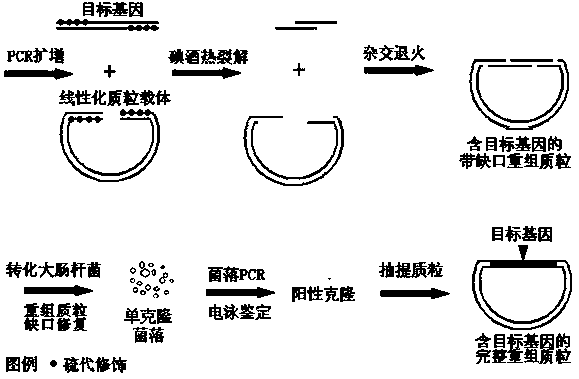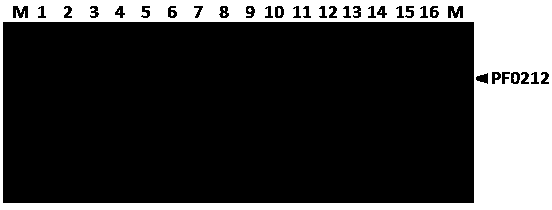Novel gene cloning method independent of enzymes
A cloning method and a new technology, applied in the field of genetic engineering, can solve the problems of complete degradation or degradation of less than 15 nucleotides, the inability to effectively control the length of single-strand overhangs, and the difficulty of cloning target genes, etc., to achieve simple cloning Quantity, elimination of false positive clones, and improvement of lysis efficiency
- Summary
- Abstract
- Description
- Claims
- Application Information
AI Technical Summary
Benefits of technology
Problems solved by technology
Method used
Image
Examples
Embodiment Construction
[0018] The technical solutions in the embodiments of the present invention will be described clearly and completely below. Obviously, the described embodiments are only a part of the embodiments of the present invention, rather than all the embodiments. Based on the embodiments of the present invention, all other embodiments obtained by those of ordinary skill in the art without creative work shall fall within the protection scope of the present invention.
[0019] See figure 1 , Provide a novel gene cloning method that does not rely on enzymes, including the steps:
[0020] (1) Design and synthesize the primer sequence (oligonucleotide fragment) used to amplify the target gene and the plasmid vector. The characteristics of the primer sequence are: (a) There is an intermittent thiomodification between the 1-25 position at the 5'end The phosphodiester bond is 5-8 bases apart between adjacent thiomodifications; (b) The base sequence between the 5'end of the forward primer of the amplifi
PUM
 Login to view more
Login to view more Abstract
Description
Claims
Application Information
 Login to view more
Login to view more - R&D Engineer
- R&D Manager
- IP Professional
- Industry Leading Data Capabilities
- Powerful AI technology
- Patent DNA Extraction
Browse by: Latest US Patents, China's latest patents, Technical Efficacy Thesaurus, Application Domain, Technology Topic.
© 2024 PatSnap. All rights reserved.Legal|Privacy policy|Modern Slavery Act Transparency Statement|Sitemap


